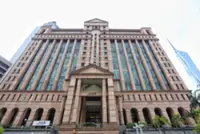The plan, which will now feature two tunnels stretching 4.2 miles (6.7km) for travel in both directions, is estimated to cost roughly US$492mil (RM2.2bil) and is expected take riders to their destination in less than 10 minutes, Watkins said. — Photo by Jakob Søby on Unsplash
Five years ago, tech mogul Elon Musk posited a way to curtail rush-hour traffic in Southern California: Build high-speed underground tunnels.
Among those plans, Musk's civil engineering firm, the Boring Co, submitted an unsolicited proposal in 2019 to the San Bernardino County Transportation Authority for a tunnel that would whisk riders from the Rancho Cucamonga Metrolink station to Ontario International Airport in just a few minutes.
Already a subscriber? Log in
Save 30% OFF The Star Digital Access
Cancel anytime. Ad-free. Unlimited access with perks.





